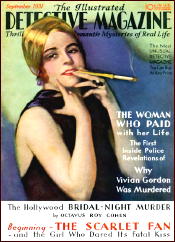Sun 22 May 2016
A Book! Movie!! Review by Dan Stumpf: LUKE SHORT – Station West.
Posted by Steve under Reviews , Western Fiction , Western movies[16] Comments
LUKE SHORT – Station West. Houghton Mifflin, hardcover, 1946. Bantam #139, paperback, 1948. Serialized in The Saturday Evening Post from 19 Oct to 30 Nov 1946. Reprinted many times.
STATION WEST. RKO, 1948. Dick Powell, Jane Greer, Agnes Moorehead, Burl Ives, Guinn “Big Boy’ Williams, Steve Brodie, Raymond Burr and the ever-popular Regis Toomey. Screenplay by Frank Fenton and Winston Miller. Directed by Sidney Lanfield.
Luke Short always had a way with gritty characters and down-and-dirty stories, and here’s one of his best. John Haven, a cavalry officer working undercover, gets dispatched to investigate the theft of Army Uniforms at the fort near the mining/logging town of South Pass Wyoming and quickly discovers that the quirky crime is merely a prelude to something much more grandiose and sinister.
From this fairly conventional start, Short builds an atmosphere of pervasive evil and compulsive treachery, painting South Pass as a snowbound Western Gomorrah: a town run by corrupt bosses, rife with casual killings, where larceny is a way of life and life is nasty brutish and short, to coin a phrase.
To be sure, there are some good folks here: the upright Cavalry Captain and his beautiful daughter; the hard-working widder woman working as Haven’s liaison; a few miners and freighters and cooks… but the impressive thing about Station West is how the author pushes his protagonist through a plot filled with a near-constant sense of danger and double-cross. Short keeps us guessing about the moves and counter-moves in a story that bucks and jumps like a toboggan on a bumpy slope — an apt comparison since he also evokes the chill of a Wyoming winter in a way that kept me shivering.
As I watched the film made from this, it suddenly occurred to me that the TV character Peter Gunn must have been based on Dick Powell’s tough-guy persona; they show the same wry cynicism, share the lop-sided grin, are quick with a quip or a punch, and handy with the ladies as the plot requires. That has nothing o do with this review — just thought I’d throw it in here and look at the ripples.
Anyway, the movie Station West works a few changes on the book. For one thing it swaps the frigid Wyoming locale for sunny, picturesque (and familiar) Red Rock area around Sedona Arizona. And they write in another character: where the criminal gang in the book is run by a couple of nasty tough guys, the outfit in the movie is headed by Jane Greer, who runs her unlawful enterprise with an iron fist, much as Barbara Stanwyck would do (more convincingly) a bit later.
The Greer character lends a neat noirish tone to a film that carries it nicely; there’s enough night in this movie to put a Yukon winter to shame. We also get Raymond Burr as a crooked lawyer, Agnes Moorehead, and Guinn “Big Boy†Williams as a sadistic strong-arm reminiscent of his turn in The Glass Key (1935).
The film carries over the fights, shootings and double-crosses from the book and carries them well, and it even makes room for a few brief and quirky turns by some good character actors, but one of these puzzles me:
Burl Ives sings the song under the title credits and has a showy bit as a philosophical hotel clerk (you know the type) but he gets NO BILLING! His name never appears on the cast list or even in the musical credits. I did some research on this and found that Ives was blacklisted by the HUAC in 1950, which led to a rather controversial phase in his life and career, and I wondered if this might have something to do with it, which led to some deeper thought about the nature of hypocrisy and how one can deny the obvious simply by keeping a straight face…..
But all that is mere idle speculation. And these thoughts passed like breeze, which man respecteth not. Station West is a fine book and a fun noir Western, and you should enjoy them both.
